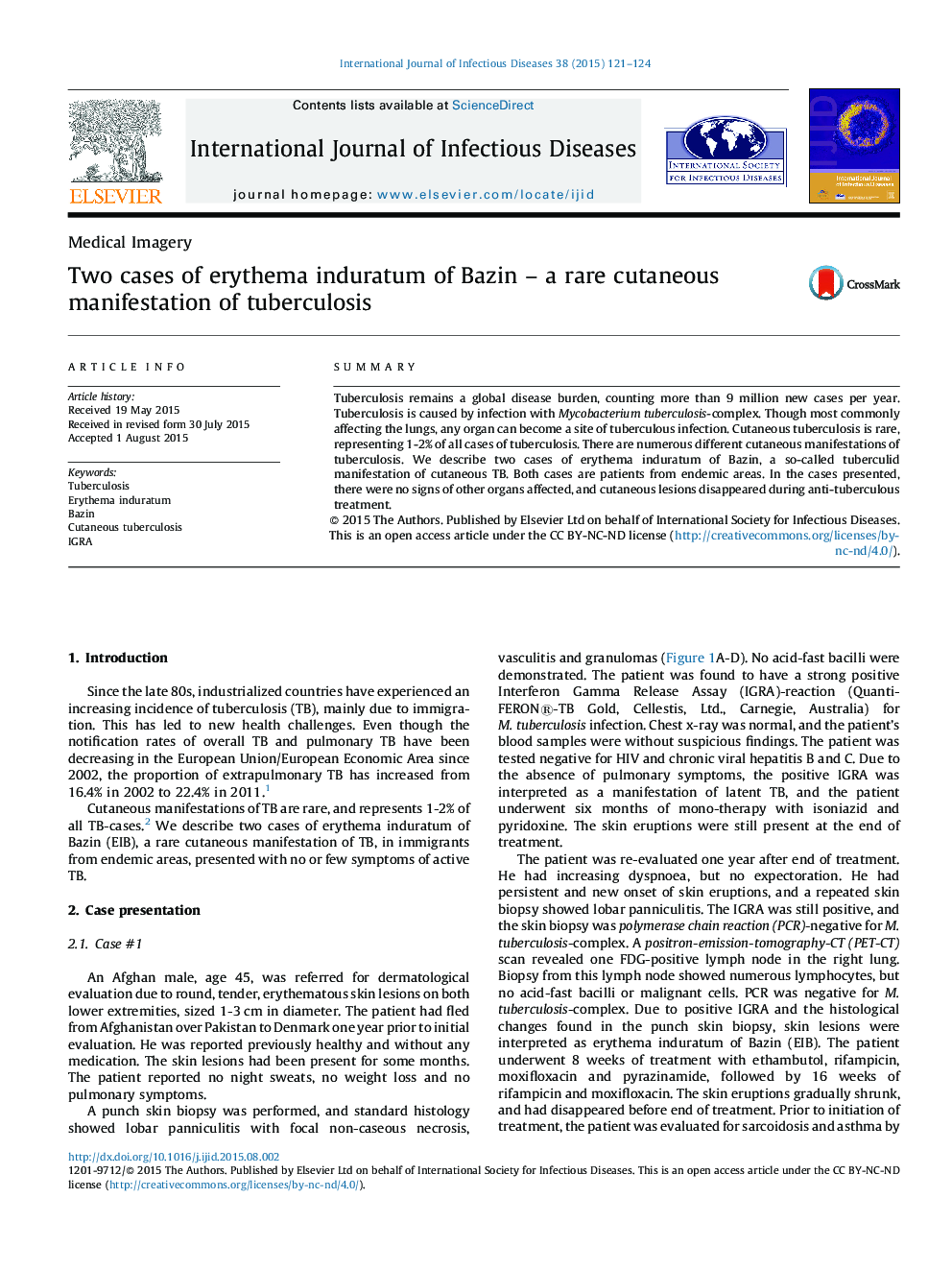| Article ID | Journal | Published Year | Pages | File Type |
|---|---|---|---|---|
| 3362009 | International Journal of Infectious Diseases | 2015 | 4 Pages |
•We describe two cases of erythema induratum of Bazin (EIB), a cutaneous form of TB•Cases had no signs of active TB, but had a positive Interferon Gamma Release Assay•The cutaneous lesions disappeared during anti-tuberculous treatment•EIB should be considered as a sign of TB in patients with persistent skin lesions
SummaryTuberculosis remains a global disease burden, counting more than 9 million new cases per year. Tuberculosis is caused by infection with Mycobacterium tuberculosis-complex. Though most commonly affecting the lungs, any organ can become a site of tuberculous infection. Cutaneous tuberculosis is rare, representing 1-2% of all cases of tuberculosis. There are numerous different cutaneous manifestations of tuberculosis. We describe two cases of erythema induratum of Bazin, a so-called tuberculid manifestation of cutaneous TB. Both cases are patients from endemic areas. In the cases presented, there were no signs of other organs affected, and cutaneous lesions disappeared during anti-tuberculous treatment.
